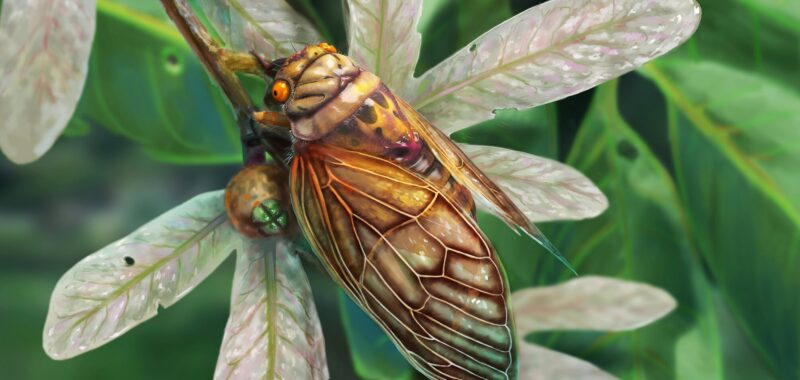Cicada season is dawning across the eastern US, this time with Brood XIV resurfacing for the first time since 2008. But as noisy and numerous as they are, this year’s swarms represent only a fraction of the roughly 3,500 species found all around the world.
While true cicadas (the larger of the two existing cicada families) are one of the most diverse insect groups today, not much is known about their earliest ancestors. But a recent fossil discovery near Frankfurt, Germany is helping expand our knowledge of the bug’s evolution—and it appears to be the earliest example of the Cicadinae subfamily ever found. The details are explored in a study published April 29 in the journal Scientific Reports.

The 47-million-year-old fossil was excavated from an oil shale slab at the Messel Pit formation. This geological deposit and UNESCO World Heritage Site in central Germany dating back to the Eocene epoch, roughly 56 to 33.9 million years ago. Almost completely preserved, its outlines showcase an almost unprecedented level of detail for such a small insect. The newly described species has been named Eoplatypleura messelensis and belongs to the Platypleurini group of cicadas. The find is made even more startling due to just how rare these examples are across all of paleontology. According to the team from this study, only around 44 cicada fossils have been dated from the Cenozoic era beginning about 66 million years ago.
“There are only very few fossil [cicada] finds compared to the large number of modern species,” explained study co-author Sonja Wedmann. “Within this family, the Platypleurini group is particularly striking—it has a wide distribution and contains many different species with special characteristics. For the first time, we have now described a fossil from this group of cicadas.”
The first-known E. messelensis specimen’s body measures about one inch long and with a roughly 2.68 inch wingspan. Its head is distinctly compact and contains small compound eyes, along with broad forewings with curved leading edges. Its most striking feature are its comparatively large, patterned wings.

“These patterns are similar to those of modern cicada species of the Platypleurini group, which live in woods and scrubland,” said paleontologist and study first author Hui Jiang.
Jiang explained that given the Messel region’s subtropical climate about 47 million years ago, the cicada’s coloration likely served a similar evolutionary function as its descendants found in similar present-day environments—namely camouflage.
Although the first E. messelensis fossil find was female, its Platypleurini grouping also suggests its males could generate loud buzzing mating calls similar to today’s cicadas.
The discovery of E. messelensis does more than simply set a new record as the earliest-known true cicada. It closes the gap on the evolutionary history of cicadas across the Cenozoic. Looking ahead, its finders believe that their fossil may offer a useful chronological reference for genetic studies, as well as expand our understanding of how Platypleurini cicadas continued to spread and thrive through to the present day.
“Insects account for a large part of biodiversity,” said Wedmann. “Their fossil record helps us to better understand the development of complex ecosystems and ecological interactions.”


